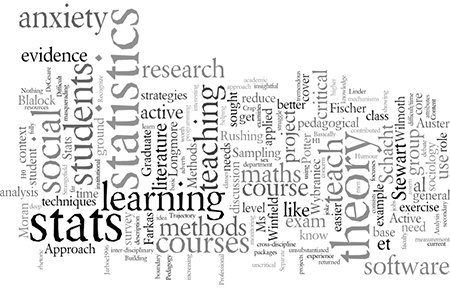
Quantitative Methods (QM) Pedagogy (WP6)
People
Background
The challenge of training future cohorts of quantitative social science researchers appropriately, and securing the ‘pipeline’ from school and undergraduate study through postgraduate to postdoctoral research, depends not only on resources but on effective pedagogy. While there is research evidence on statistics teaching, both at school and university levels, most of this literature is US based, and much of it prescriptive in its approach. There is limited evidence-based work that addresses the social sciences specifically, where the challenge of poor maths skills and of a lack of confidence in applying them is often associated with antipathy to QM.
In the context of the Q-Step programme, the evolution of the ESRC Doctoral Training Centres, and the on-going success of the AQMeN initiative to build quantitative methods capacity, the next phase of NCRM has a unique opportunity to work with quantitative methods trainers and students to learn more about ‘what works’ in pedagogical and career development terms.
One theme we are elaborating is an analysis of statistical anxiety (SA)
- Can SA be seen as facilitating as well as debilitating?
- Is SA mediated by other factors like confidence?
- Is it useful to consider SA distinctly from anxiety
Considering anxiety
There is a large literature discussing SA. Several instruments have been developed to measure the intensity of SA. Chew and Dillon (2014) identify the Statistics Anxiety Rating Scale as a validated measure for capturing statistical anxiety.
There are parallel literatures examining anxiety in other contexts such as sports, learning languages and test anxiety. These literatures suggest the potential that anxiety can be both facilitating and debilitating, with the effect of anxiety potentially mediated by factors like worry or confidence. The first paper to refer to the concept of facilitating and debilitating anxiety is by Alpert and Haber (1960). These concepts are however absent from the statistical anxiety literature where research has focussed on measuring the intensity, not the direction, of anxiety.
Part of our work will therefore examine whether SA is mediated by level of confidence and examine if this relates to the direction of the effect that anxiety can have. In undertaking this we will consider how useful it is to conceptualise SA as distinct from anxiety in general. It may be the case that, although it is possible to meaningfully measure SA, the substantive effect of considering something called SA, as compared general anxiety, is small. A generally anxious individual who is a student could often also be a statically anxious student and any error in measuring the difference between the two substantively small.
Outputs
Ralston, K. and MacInnes, J. Crow, G. Gayle, V. (2015), Quantitative Methods Pedagogy in Social Science, Methods News, ESRC National Centre for Research Methods Newsletter, Summer 2015
Ralston, K. (2015), Quantitative Methods Pedagogy in Sociology: What have we got to go on? The Detective’s Handbook (blog),
NCRM Podcast: 'Statistics Anxiety' A Fairy Tale For Our Times? - John MacInnes

